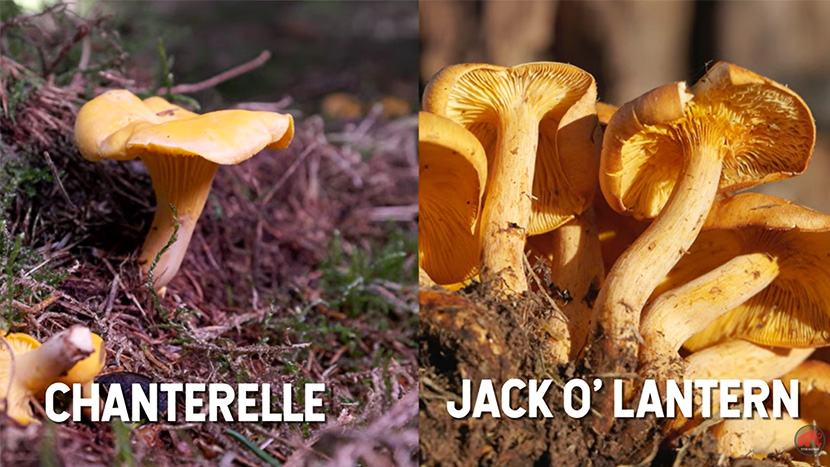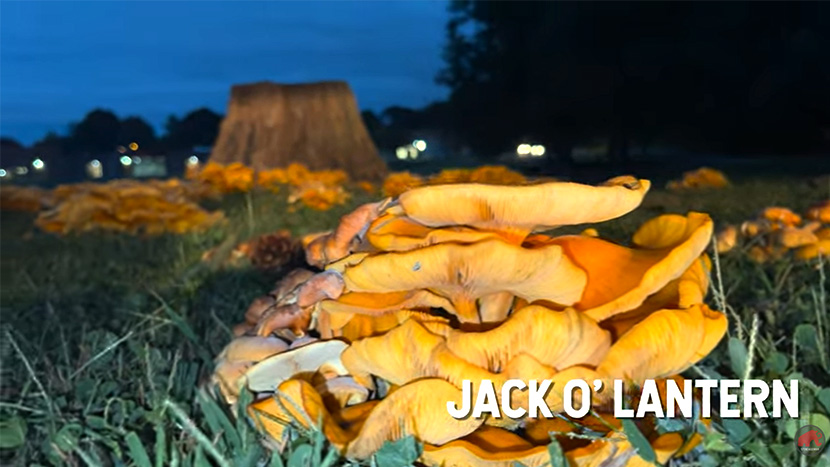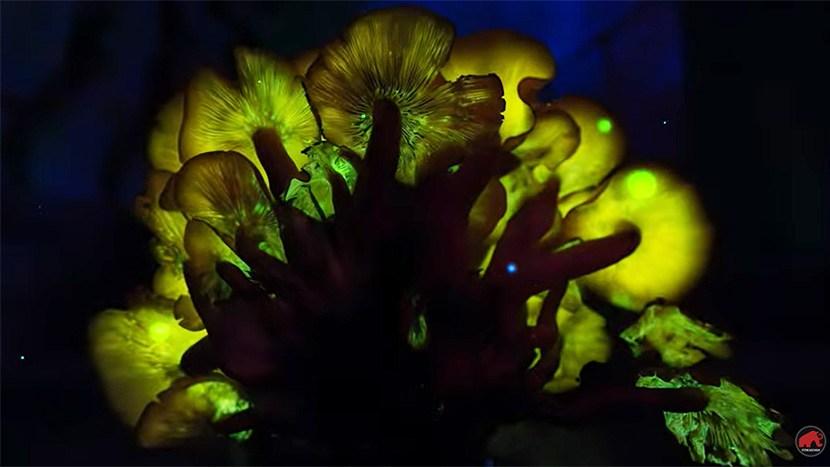The Glowing, Toxic, Potentially Cancer-Fighting Jack O’ Lantern Mushroom
If you are walking deep in the forest at night and see a faint glow among fallen trees, you might think your eyes are fooling you. If you let your imagination run a little wild, fairies and other mythical creatures might even come to mind. However, the most likely scenario is that what you are seeing is not magical, but nonetheless quite fascinating. This intriguing glow could be the natural bioluminescence from a fungi aptly named the Jack O’ Lantern mushroom
With Halloween fast approaching, many will be decorating their porches with Jack O’ Lantern pumpkins, so we thought it was a great time to tell you all about their fungal namesake!
The Jack O’ lantern Mushroom
The Eastern American Jack O’ lantern (Omphalotus illudens) is a bright orange, beautiful, toxic, and bioluminescent mushroom that is usually found on decaying wood in North America. There are also other species found here and in different parts of the world.
Possibly the most interesting fact about this inedible fungi is the bioluminescence. That is right, this fungus naturally glows! It is a beautiful mystery that has captivated people for centuries. In fact, some of the earliest records of people being intrigued by glowing mushrooms traces back to Aristotle, who called this cool green light “fox fire magic.” Even though we now know how and why this happens, it doesn’t make it any less incredible.
So, now that we do know more about this mushroom let’s talk about how to identify it, what toxins it contains, and what we know about its bioluminescence!
Identify Jack O’ lantern Mushroom
Just as you want to be able to identify mushrooms that you can forage and eat, it is key to know which ones you can not. It is important to recognize the Jack O’ lantern mushroom so that you do not try to eat it, and also to be sure you do not mix it up with edible chanterelle mushrooms, which can look a bit similar.
Jack O’ Lantern Mushrooms are
- Bright orange
- Grow in clumps
- Have a distinct stalk and cap
- Have fine gills running down their stalks
- Caps are around 2 to 8 inches wide.
- Young caps are convex and pointed but as the mushroom matures they flatten out and have a dip in the middle.
- Described as odorless or having a mild sweet odor
The key difference here, though not the only one, between Jack O’ lanterns and Chantrelles are the gills. Chanterelles do not have gills, instead they have folds.

Can you eat Jack O’ Lantern Mushrooms?
No, do not eat Jack O’ Lantern mushrooms! This is a very cool mushroom but it is also very toxic. You should not eat this fungi in any context. Unlike some mushrooms, such as the fly agaric, cooking or drying it will not help break down the toxins it contains. Eating it can lead to serious gastrointestinal problems because of illudins, more on that in a moment.
That being said, it is safe for you to handle toxic mushrooms. The fact that you shouldn’t touch toxic fungi is one of the common mushroom myths that just isn’t true. The toxins that mushrooms contain do not leach through the skin! You can safely handle and smell them while working on your identification skills. Just be sure that if you are foraging mushrooms to eat that you are fully confident in your mushroom identifying skills.
So, what are these harmful Jack O’ Lanterns toxins?
What toxins are in Jack O’ Lantern Mushrooms?
The toxins found in Omphalotus illudens (small spoiler from the scientific name here) are called illudins. These compounds are so harmful because they actually alkylate DNA and damage genetic material. This will ultimately kill cells, causing all kinds of harm to your digestive system and beyond. The interesting part about illudins is that though they can be extremely dangerous, they could also be used in cancer treatments.
Illudins From Mushrooms as Cancer Treatment
Cancer treatments need to effectively kill cancer cells, and seeing as illudin is a cell killer, it is a current candidate for treatments of various cancers. For example, Illudin S. has shown to be effective against pancreatic, lung, and breast cancer. While Illudin M. is showing promise against leukemia, lymphoma, and multiple myeloma. The next step is for researchers to find out how to get these compounds directly to cancer cells, in order to kill those cells without damaging other healthy cells.

How and Why Does Jack O’ Lantern Mushroom glow?
How Mushrooms Glow
There are a few different ways that the natural world produces light. In the case of the Jack O’ Lantern mushroom, and most other bioluminescent fungi, it is a simple reaction using just two compounds: luciferin and oxygen!
The compound Luciferin reacts with Oxygen via the luciferase enzyme, and by using just a bit of energy (ATP) the mushroom creates oxyluciferin! This reaction excites an electron in the molecule. Now, when the electron inevitably goes back to its original state it releases energy as light! This kind of reaction is extremely efficient, because since no heat is formed, all of the energy can go to creating this “foxfire glow”.
Why do Mushrooms Glow?
So, why would a mushroom need to glow in the first place? If you pay close attention, the glowing parts of the mushroom are just on the gills. Can you guess how this could help out a fungus? If you guessed spreading spores, you are correct!
As any of us with a back porch light know, lights at night attract a range of insects. So, after these insects crawl around on the mushroom for a bit, they become covered in spores, which they then will drop off in a new place. This helps the mushroom to spread out to new places.

Wrapping it Up
Jack O’ Lantern mushrooms (Omphalotus illudens) are a bright, toxic fungi that can be found on rotting wood, and glow in the dark! These fungi are fascinating to find but are inedible due to their illudin toxins, which may serve as a key compound for future cancer treatments! Their bioluminescence is thanks to a simple yet very effective reaction that emits light in order to attract insects which will involuntarily aid in spreading the spores of the mushroom. So, next time you head out in the woods at night, take a few moments to turn off your light and see if you can find some foxfire magic of your own!

